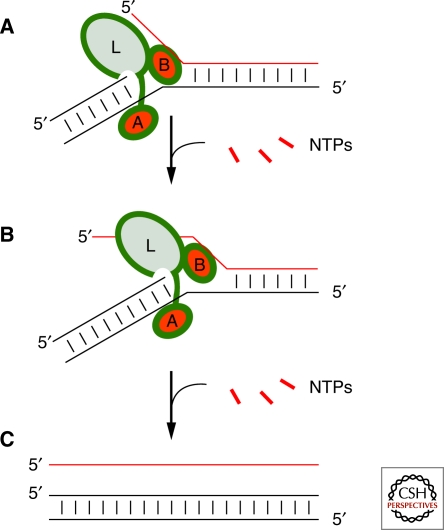Figure 6.
Evolving a processive strand-displacing RNA polymerase ribozyme from the B6.61 RNA polymerase. (A) After formation of an initiation complex, which exposes the template strand, a short RNA primer sequence is either synthesized de novo or allowed to hybridize. (B) Elongation requires that nucleotides immediately upstream of the site of nucleotide incorporation are single-stranded. If interactions between the ligase core (L) and the accessory domain (Circled A) can be improved so that the freshly synthesized strand together with template are held robustly and nonspecifically the polymerase should become much more processive. If in addition these two domains can be rigidly connected to a third domain (Circled B) that ensures dehybridization of the incoming duplex, transcription from dsRNA as well as ssRNA templates would be possible. This elongation complex should remain invariant in shape as it slides along the template. (C) Transcription ends with the release of one strand from the original duplex RNA and the duplex RNA being regenerated with a freshly synthesized RNA strand.

